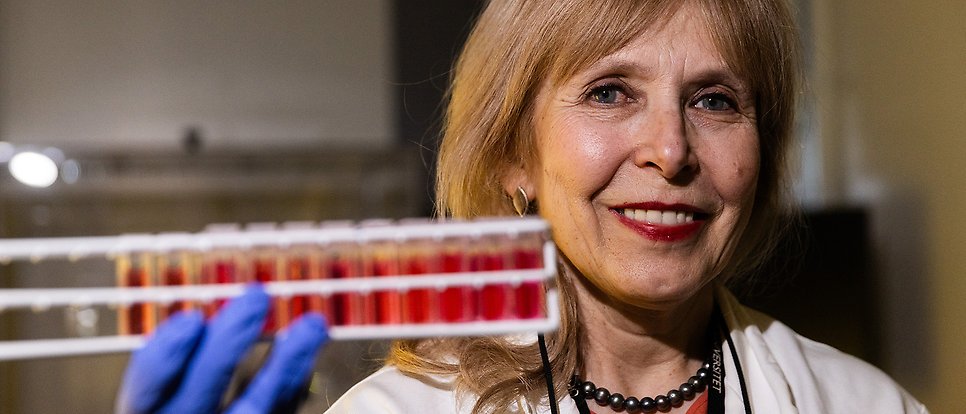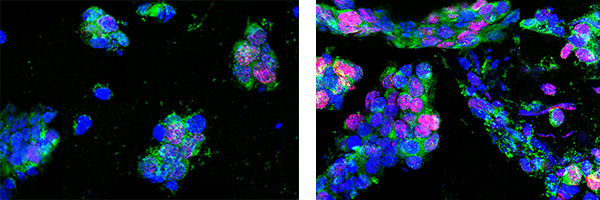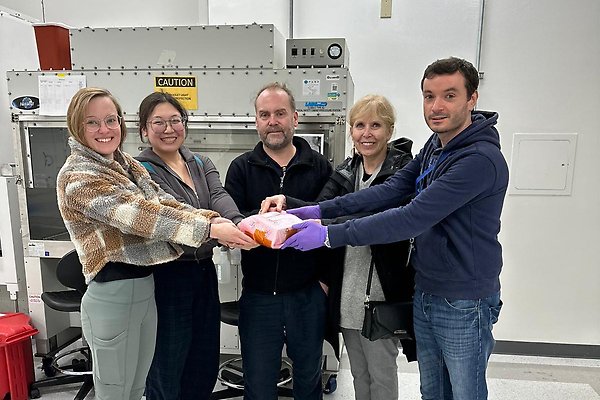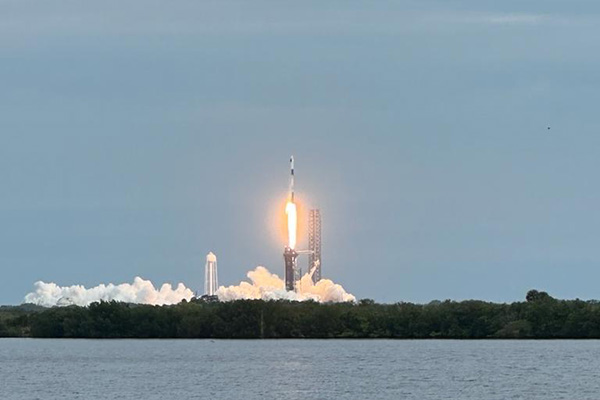Swedish stem cells strengthened by space travel

“Sometimes you have to reach a limit and then take a step beyond it to discover new things,” says Elena Kozlova. Photo: Tobias Sterner
Elena Kozlova and her research team have made new discoveries about how stem cells are affected by microgravity. During a three-week spaceflight, the ability of cells to survive and grow in space was studied, yielding promising results.
The research team’s aim was to study how stem cells are affected by prolonged periods in space. The experiment, conducted on board the International Space Station (ISS), showed that the stem cells survived longer than planned in severe anaerobic conditions (without access to oxygen). The space journey was extended by one week, from the planned two weeks to three.
“Sometimes you have to reach a limit and then take a step beyond it to discover new things. We are very happy to have brought the stem cells back successfully. They not only survived but thrived in anaerobic conditions for a very long time. They are also displaying new characteristics,” explains Kozlova.
The researchers have already been able to show that the stem cells in space are stronger than the control group of similar stem cells that remained on Earth at the Kennedy Space Centre.
Rapid growth
After returning to Uppsala, the cells have multiplied very slowly – both those exposed to microgravity and those that remained on Earth as control-group cells. After a few days, however, the cells that had been in space began to multiply very quickly. The freezers at Uppsala Biomedical Centre contain a total of several million stem cells with the unique space-acquired characteristics.

The image shows proliferating cells in the 3D printed scaffolds. On the left: Stem cells in the control group. On the right: Stem cells that have been in space and are multiplying rapidly.
The genetic material and the solution from space have been analysed in collaboration with American and Italian researchers alongside other research teams at Uppsala University. Kozlova shows microscope images of how fast the space cells multiplied compared to the control group.
“We were particularly interested in how the growth would proceed when the cells were placed in 3D-printed support material. We see that statistically, those that have been in space are much better at multiplying than control cells on Earth. This opens up completely new possibilities for medical research and treatments in the future.”
Careful planning for launch
Participating in a space project like this requires careful planning. Travelling to the US and working with international partners was essential to the success of the experiment,” she notes.
“Everything has to happen at exactly the right time; every second counts when it comes to space projects. And because things change all the time, you have to constantly replan. I felt a major responsibility for everything, but also a lot of support from everyone involved.”

The research team prepares stem cells for the Axiom Misson 3 space experiment in January 2024.
The research team is now planning more experiments to conduct further research into their findings, with a particular focus on how they can be applied on Earth.
“The next step involves experiments with simulated microgravity in order to replicate this effect on Earth. If that is impossible, we will aim for new experiments in the future in space.”
Future of medicine and role of microgravity
She hopes that further studies will reveal mechanisms that could lead to new treatments for various diseases, such as stem cell therapy for neurodegenerative diseases or type 1 diabetes.
“We want to continue conducting scientific experiments to find the mechanisms behind the stem cells’ new characteristics and how they can be used for medical purposes. In a year, we may have more answers.”

There may be more space experiments in the future. Photo from the launch on 18 January 2024.
This successful space experiment could lead to many more similar projects, involving international collaborations and innovative approaches. Kozlova has high hopes for the future.
“It’s an incredibly exciting time for space research, with all the new technologies making it possible to conduct biological experiments in space.”
Annica Hulth
International space experiment
- Marcus Wandt is a project astronaut with the European Space Agency (ESA).
- For two weeks, he conducted an experiment on stem cells for Uppsala University and one on ergonomics for KTH Royal Institute of Technology on an international space station. Both projects were selected and funded by the Swedish National Space Agency.
- Axiom Space (Ax-3) organised the trip in collaboration with the US space agency NASA and the company SpaceX.
